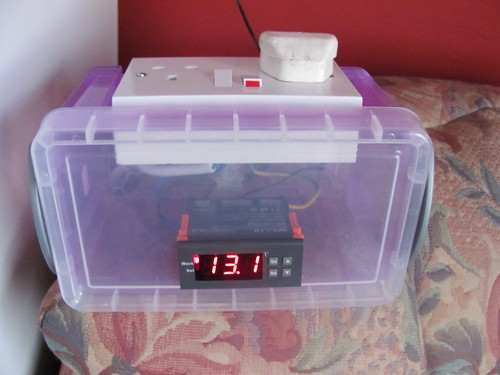Springer
Its a dogs life
- Joined
- Oct 9, 2009
- Messages
- 1,445
- Reaction score
- 0
The importance of a constant correct fermentation temperature has always but well up my priority list and I have built two temperature controlled cupboards. One pid controlled, to use it cos I bought the wrong one and one on a room stat.
It is nice to see the actual temperature inside.
I am in the process of converting a fridge for summer and put together a STC 1000, similar to ones supplied ready built by sponsor Cedaronics.
What a great piece of kit. I used it as a monitor for mash tun out temperature the other day. :thumb:
I used it as a monitor for mash tun out temperature the other day. :thumb:
Also for various reasons, don't ask :lol: , I have 25 litres fermenting in the kitchen, on a heat mat, which does tend to put out to much heat.
So enter the STC 1000, second use in week, never mind what it was built for. Put the sensor on the tub, bit of lagging, kitchen roll and a patch of gaffer tape to hold it.
Will also be used for temperature control in the summer for honey processing

Highly recommended, buy or make on.
S
It is nice to see the actual temperature inside.
I am in the process of converting a fridge for summer and put together a STC 1000, similar to ones supplied ready built by sponsor Cedaronics.
What a great piece of kit.
Also for various reasons, don't ask :lol: , I have 25 litres fermenting in the kitchen, on a heat mat, which does tend to put out to much heat.
So enter the STC 1000, second use in week, never mind what it was built for. Put the sensor on the tub, bit of lagging, kitchen roll and a patch of gaffer tape to hold it.
Will also be used for temperature control in the summer for honey processing

Highly recommended, buy or make on.
S






